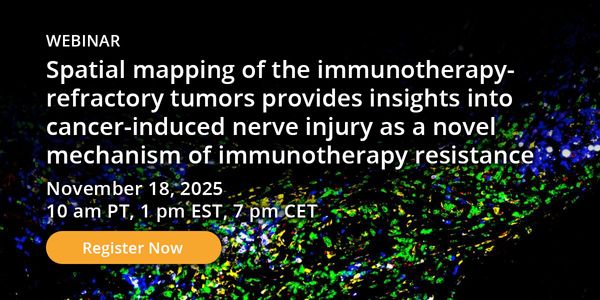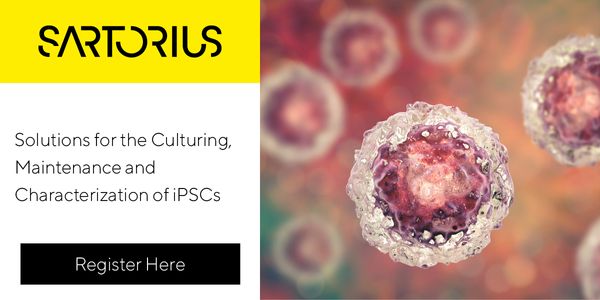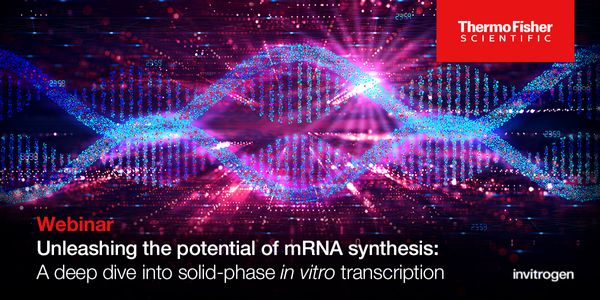Transcription
Transcription is the first step in gene expression in which genetic information is copied from a DNA to an RNA format. Transcription is controlled by proteins known as transcription factors that regulate the expression of genes.
-
DEC 03, 2025 | 8:00 AMRNA-based therapeutics are transforming medicine, but scaling production efficiently remains a challenge, particularly the cost-intensive in vitro transcription (IVT) step. Join this webinar...NOV 18, 2025 | 10:00 AMPerineural invasion (PNI) is a well-established factor of poor prognosis in multiple cancer types, yet its mechanism remains unclear. By using a multi-omics approach, overlay of multiple spa...Engineered immune cell therapies offer the promise of more tailored interventions than traditional systemic checkpoint blockades, but so far remain ineffective across the majority of clinica...
CRISPR-Cas9 has been widely adapted for use in transcriptional modulation and epigenetic engineering with deactivated Cas9 (dCas9) systems to enable CRISPR interference (CRISPRi) and CRISPR...
Speaker:
Clarence Mills
, Emily Feldman, PhD
Ebola virus executes its replication cycle through a tightly orchestrated sequence of events, but the host factors that govern the timing of these steps have remained poorly defined. In this...
Aging is accompanied by widespread epigenetic reprogramming, including the loss of heterochromatin and altered chromatin-associated processes. These changes compromise transcriptional precis...
Speaker:
Jong-Hyuk Lee, PhD
MAY 13, 2025 | 9:00 AM
Immune checkpoint blockade (ICB) targeting T cells has enhanced clinical outcomes in patients with renal and bladder cancers; however, response rates remain limited, particularly in cases of...
APR 30, 2025 | 8:00 AM
The MAF bZIP Transcription Factor G (MAFG) is a member of the small MAF family of proteins. Previously, we have shown that miRNA-29 suppresses melanoma development, at least in part, by repr...
APR 02, 2025 | 8:00 AM
As sessile organisms, plants are incredibly mindful of their time. As a result, they extensively regulate cellular and physiological processes through a combination of circadian (anticipator...
NOV 06, 2024 | 10:00 AM
Stem cells, particularly Induced Pluripotent Stem Cells (iPSCs), are becoming essential tools in scientific research, from drug discovery to disease modeling. As the scientific community shi...
OCT 31, 2024 | 9:00 AM
In part 2 of this webinar, Dr. Emily Hodges, assistant professor of biochemistry at Vanderbilt University, will reveal new data that illustrates how the Hodges Lab is utilizing the 6-base ge...
OCT 17, 2024 | 8:00 AM
To enhance productivity in research laboratories conducting genomic studies, automation techniques along with rapid workflows are encouraged. Here, we discuss gene expression analysis by rev...
OCT 03, 2024 | 10:00 AM
Advances in proteomics and mass spectrometry enable the study of limited cell populations such as performing mouse models. Low-protein load studies often requires two steps to perform differ...
Engineered immune cell therapies offer the promise of more tailored interventions than traditional systemic checkpoint blockades, but so far remain ineffective across the majority of clinica...
Speaker:
Theodore Roth, MD, PhD
Presented at: Cancer Research & Oncology Virtual Event Series 2024
OCT 01, 2024 | 9:00 AM
Real-time reverse transcription PCR analysis of RNA expression in normal and diseased states is a fundamental technique used in research workflows. Immortalized and primary cells are often u...
This webinar is designed to explore the fundamental characteristics of reverse transcriptases and the essential factors that play a pivotal role in achieving high-quality cDNA synthesis from...
Speaker:
Laura Pranckėnienė, PhD
Organisms sense and respond to changes in the environment through signal transduction pathways. Pathways like highly conserved Mitogen-Activated Protein Kinase (MAPK) pathways are composed o...
Human respiratory syncytial virus (hRSV) infection is a significant global health and economic burden. Lower respiratory tract hRSV infections predominantly affect young children, the elderl...























